SUP Surfing Safety: 6 Tips for Staying Safe in the Surf
SUP surfing is an exhilarating experience, whether you're a beginner or a seasoned surfer. There's nothing like catching a wave in the open ocean and it's great on a SUP. Surfing is unlike any other sport. You rise high to land low, wind at your back to ride over the tide. The head rush itself is amazing! Not to mention that feeling of accomplishment you get as a rider when you catch a wave just right. SUP surfing is a bit different from traditional surfing. Once you get the hang of it and improve your skill level, you can show off your surf skills. Time to catch a wave and hang ten. 🤙
Contents
- Tip #1: Be Fit and Ready
- Tip #2: Be Aware of Everything Around You When You Surf
- Tip #3: Identify Currents in the Water
- Tip #4: Learn How to Fall While Paddle Boarding in the Surf
- Tip #5: Quit Paddle Boarding When You're Tired
- Tip #6: Don't Panic (Your Paddle Board Leash is There to Help)
- Follow the SUP Surfing Safety Tips for Ocean Fun
SUP surfing is more than getting yourself out there on the waves. You need to know the SUP surfing safety basics, even if you're an experienced surfer. This isn't to scare you off. Think of it as good etiquette to your fellow paddle boarders and surfers while you're out on the water. You don't want to cut anyone off or become a wave hog. A competent surfer knows surfer etiquette. It's part of surf culture, regardless of the surf conditions. If you follow the basics you'll have a great time and absolutely nothing to fear.

Follow the basic SUP surfing safety tips and focus on the fun.
Tip #1: Be Fit and Ready
You should never head out into the ocean waves when you're not feeling up to it. The power of water can be unforgiving in the ocean. You need strong leg and arm muscles to swim in strong currents and cut through the whitewash of breaking surf. Even paddling through small oncoming waves or a weak tide can wear you down. Most of all you won't have as much fun if you're too tired to enjoy yourself.
Consider getting into a swimmer's exercise routine, especially if you're a beginner. Swimming is a great full-body exercise that of course will help make you a stronger swimmer, but it will also make you a stronger paddler.
Swim laps in a pool, lake or even perpendicular to the beach. Swimming helps build up your legs, but most importantly for paddling it also targets you shoulders and back. This works to help you paddle out to the waves as well as when you're trying to catch them. As a comfortable swimmer, you'll be confident in your ability so you can focus on having fun during your paddle board session.
RELATED: The Top SUP Exercises and How to Do Them

Familiarize yourself with what's around you and underneath the water.
Tip #2: Be Aware of Everything Around You When You Surf
While you're out on the surf, you should always be aware of everything going on around you. This includes how the waves are moving, to other surfers and paddle boarders as well. Just be aware, keep an eye out for what's around, and you'll be fine.
It's also a good way to look after each other while you're out there surfing. If someone has a bad spill or finds themselves in a bit of trouble there's usually other surfers around that can help. And let's be clear; if surfing was too dangerous it wouldn't be loved by so many people. You're more likely to get tips from a fellow surfer rather than need any help. Everyone has to start somewhere and at some point they too were inexperienced paddlers.
Last and not least, know what you're paddling out into. If you're going to surf near the coast, rocks, or reef familiarize yourself with its boundaries and depth. There's lots of great surf breaks near ocean reefs so it's not that you need to avoid them. Just be aware of what's nearby to protect yourself from any bumps and bruises. The reef will appreciate you looking out for it as well. 😉

Learn to read the waves before you head out into them.
Tip #3: Identify Currents in the Water
Once you learn how to read the waves and ocean currents, you'll know exactly where to enter the water, where to paddle out to, and where to exit. It's certainly a skill and takes both practice and experience, so don't expect to see the waves like a pro instantly. However, as you get the hang of it, you'll improve your surfing by knowing where to catch the best waves and avoid any nasty currents.
Rip currents are powerful and speedy channel currents. They flow away from shore, instead of toward it. Although they can be dangerous if you're not expecting to be pulled away from shore, they're useful if you are trying to paddle out. The main sign of a rip current is when you see waves that hit perpendicular to the shore. Between these waves, you'll see gaps. The current will go both right and left off the waves as these currents collide. This causes the water to roll away from the shore at amazing speeds. Use them to your advantage, but don't fight against a rip current even if you didn't mean to get caught in one. It will eventually slow as you get out to deeper water, so just stay with your board. If you want to paddle out of one, paddle across it parallel to the beach. Don't try to paddle straight back against it. Just like a river, it's a current, so work with it don't fight it.
It should go without saying but just as you do every other time you head out to SUP you should check the weather. It's good practice to listen to the weather before you head out; beach forecasts usually include info on the waves. The weather can change drastically on the coastline; monitor before paddle boarding and you'll know what to expect.

With your leash attached you'll be able to safely retrieve your SUP if you fall off.
Tip #4: Learn How to Fall While Paddle Boarding in the Surf
Learning how to fall can help you avoid many unnecessary bumps or bruises. You also probably won't be wearing a personal flotation device so it's a good skill to have. Remember you're paddleboarding out on the water, so falling into a wave can be fun. As always when you're playing on the water you never want to dive in head first unless you've already checked the depth. Some good surf breaks are near shallow water. Just like you wouldn't blindly jump off the side of a boat or bridge into water without checking you should consider the same when paddle boarding.
Also, if you're surfing there's a good chance you're going to fall in anyways (it's all part of the fun). So when the time comes, do your best to fall away from your board and paddle. You should have your ankle leash attached at all times while you're out on the water, so you don't have to worry about your board getting away from you. And paddles float so you can swim over to it with your board after. Most SUPs come with a coiled leash because they give the paddler more distance to move around, while keep it tidy. However, there's another type of leash that is better for surfing; a straight leash. You should never surf with a coiled leash, as it could cause your board to bounce back and hit you.
RELATED: SUP Surfboard Exercises: 3 Drills to Help Improve Your Surfing
Tip #5: Quit Paddle Boarding When You're Tired
Riding waves can be addicting, there's no denying that. You want to be out there all day long, every day. But this can become a problem. You don't want to wear yourself out. If you're exhausted or your body is fatigued, it's time to call it a day.
Getting a cramp out on the water is no fun. And SUP surfing becomes a whole lot less fun if you're too tired to catch a wave. Enjoy your time while you're out there, but don't over do it. You'll build up your strength and endurance over time. Be patient or add in some exercises to get you there faster.

Now that you know the SUP surfing safety basics, it's time to head out for a surf!
Tip #6: Don't Panic (Your Paddle Board Leash is There to Help)
The most important tip we have for you is to stay calm. This is true for any and all situations, stand up paddle boarding and beyond. However, we also recognize this is easier said than done. That's why all of the previous tips are important. If you follow them you shouldn't find yourself in a dangerous situation. You should be fit and ready to paddle in and out of the waves, aware of what's around (so you're already avoiding any dangers or collisions), and if you do fall in it's just a nice dip in the water because you know how to fall.
The more time spent on the water, the more comfortable and confident you'll feel. Don't push your limits and go out into surf you can't handle. Start small and work your way up to bigger surf. You're out there to have fun, so simply follow the safety basics and enjoy yourself.
Follow the SUP Surfing Safety Tips for Ocean Fun
You can go out on the waves, have a good time, and not forfeit your safety. There's no need to put yourself in a dangerous situation in the first place. You wouldn't on flat water or calm water so you definitely shouldn't put yourself at risk in the ocean. It doesn't matter if you SUP surf for sport or for recreation. Follow these SUP surfing safety basics and you'll enjoy your time on the water!
FOR MORE ON SUP SAFETY: SUP Safety Tips from a Paddleboarding Instructor


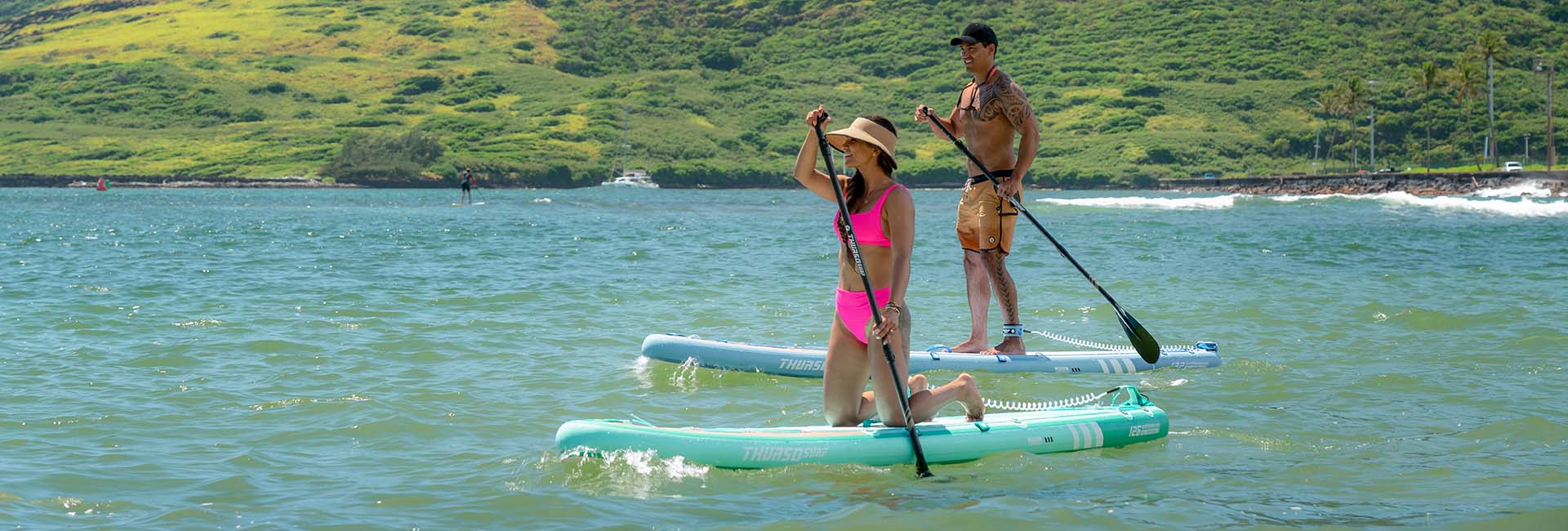
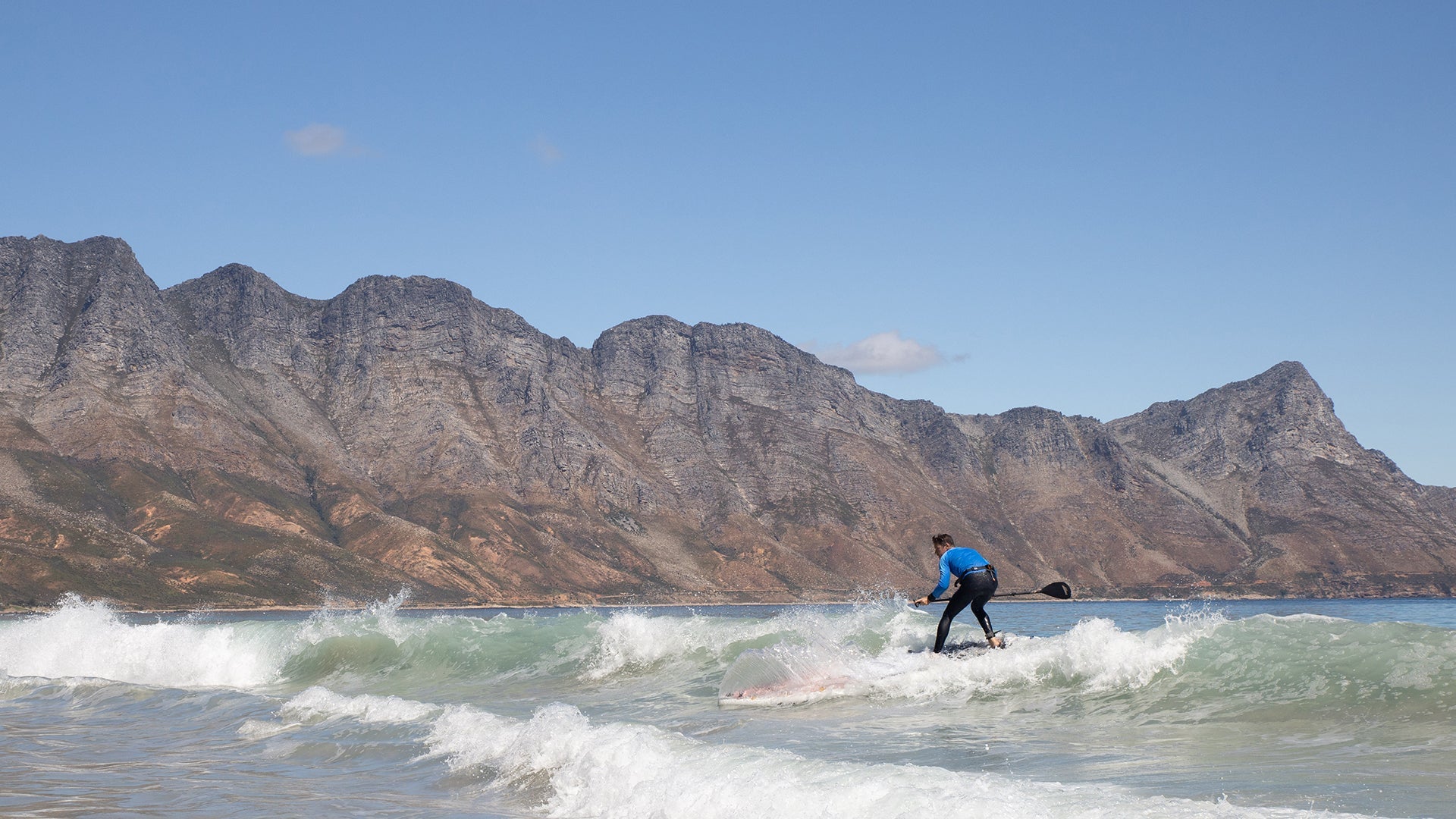
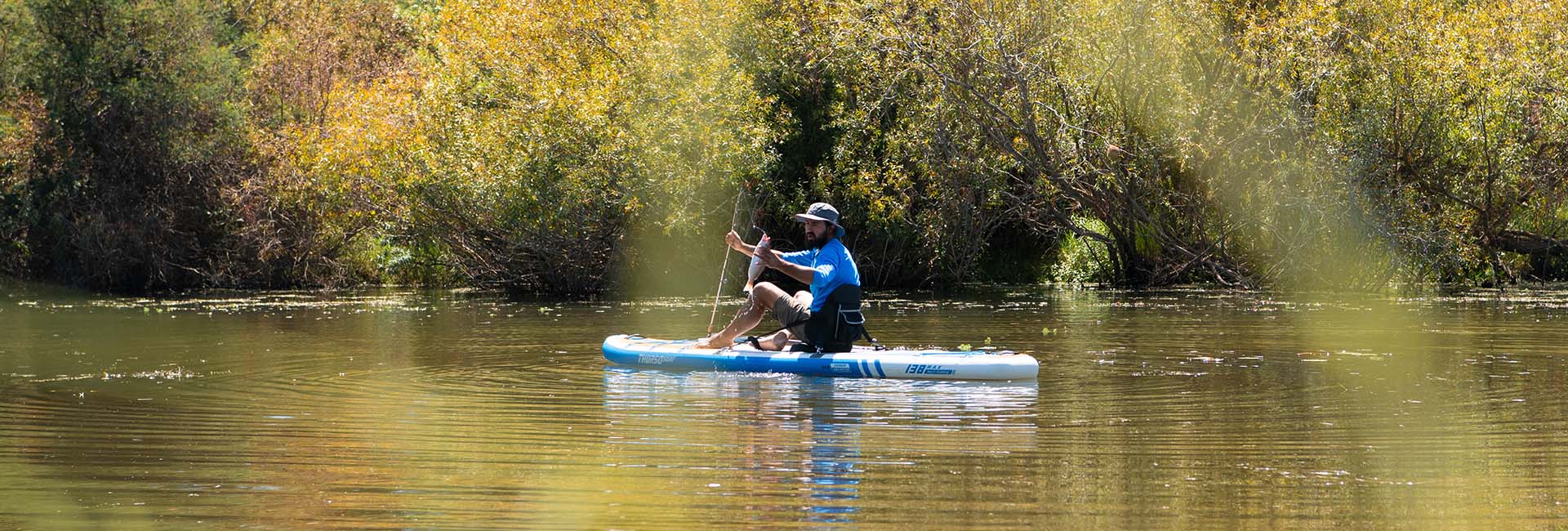
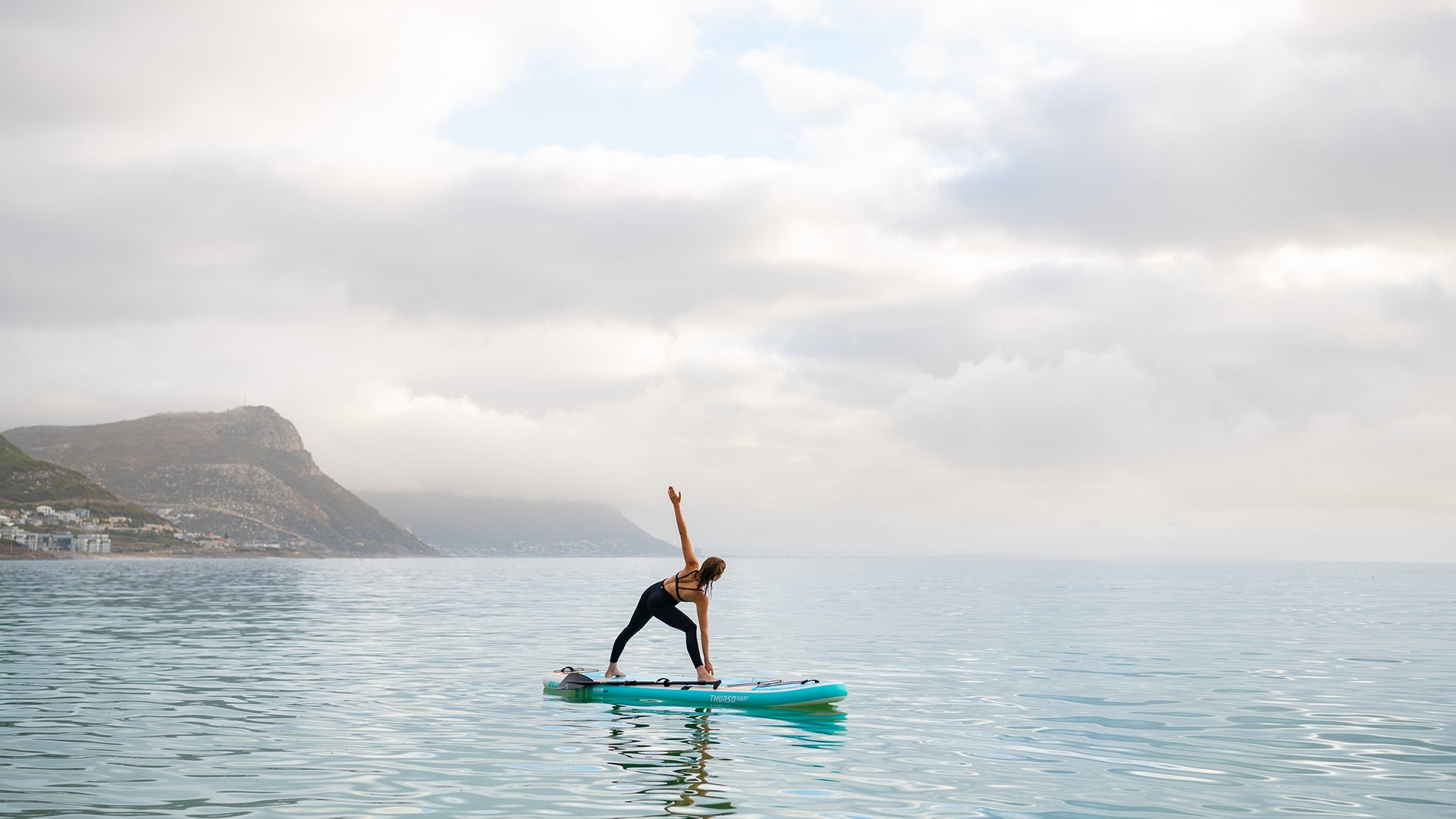
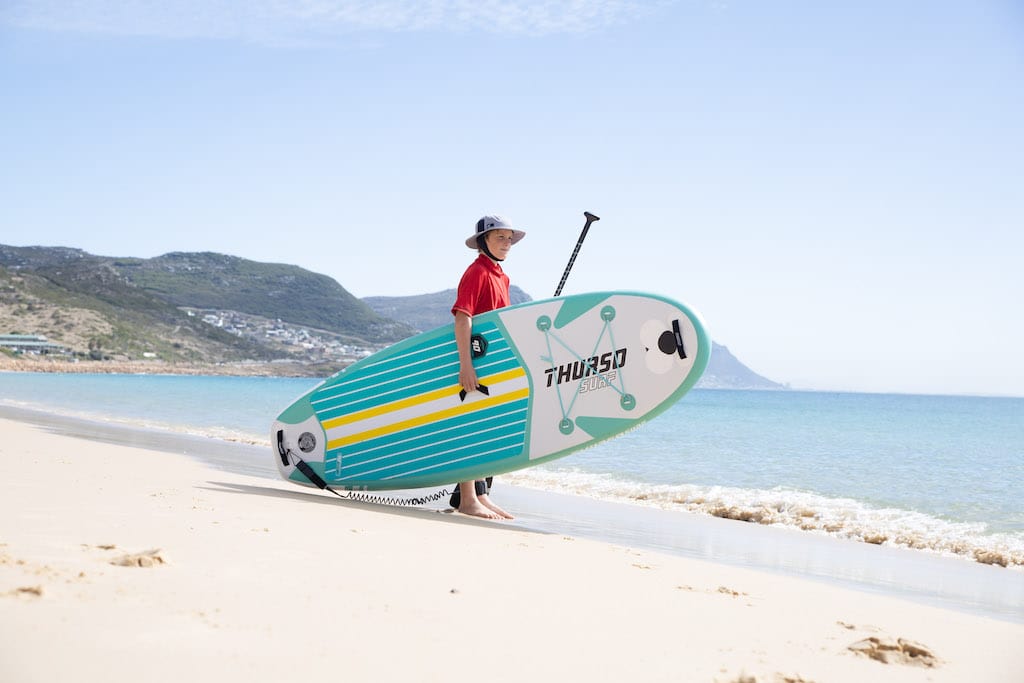
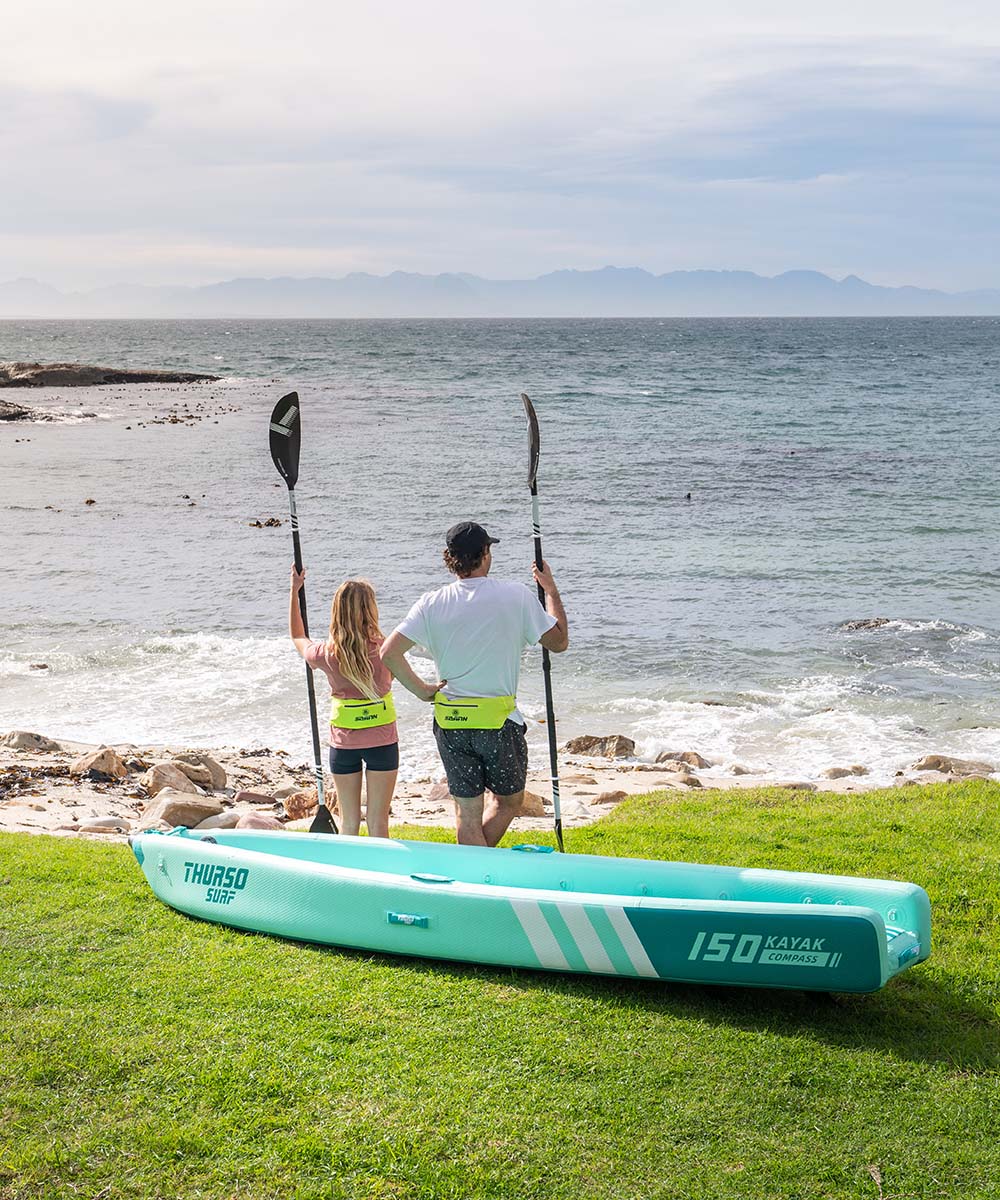
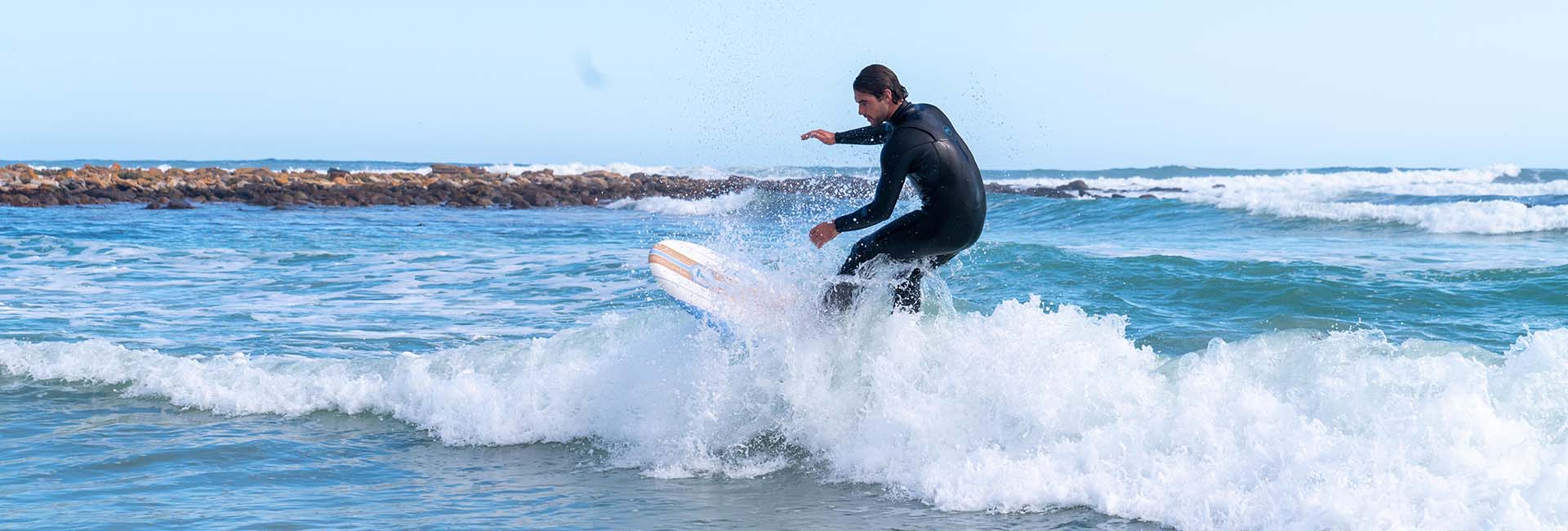
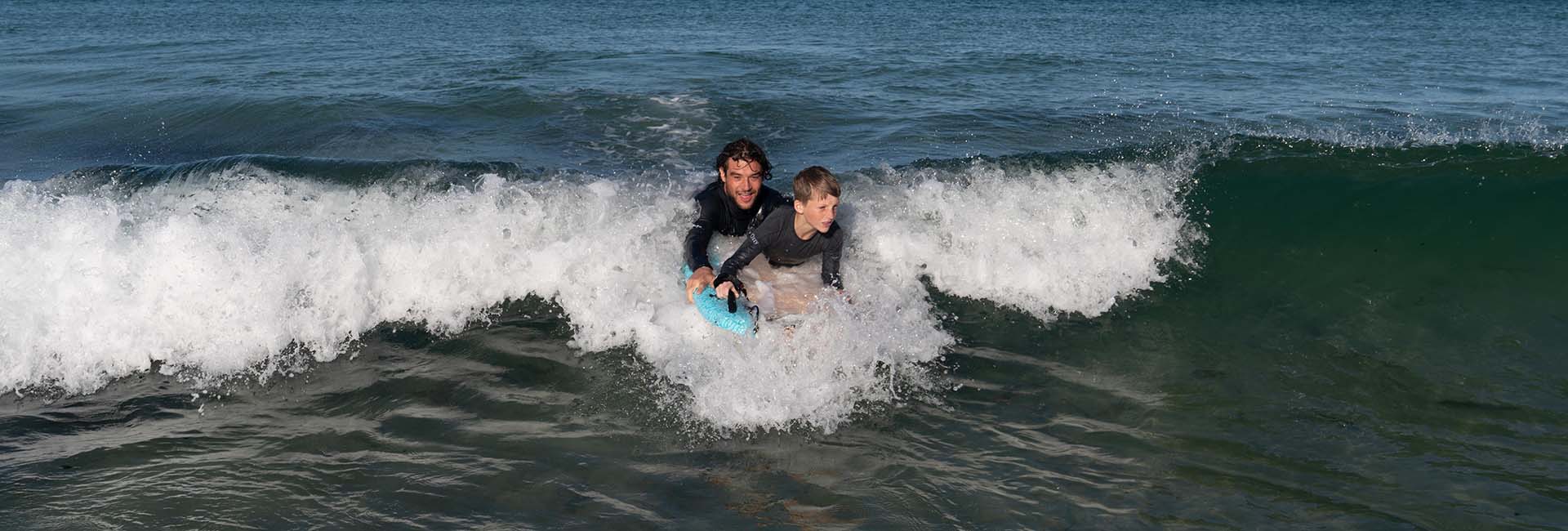
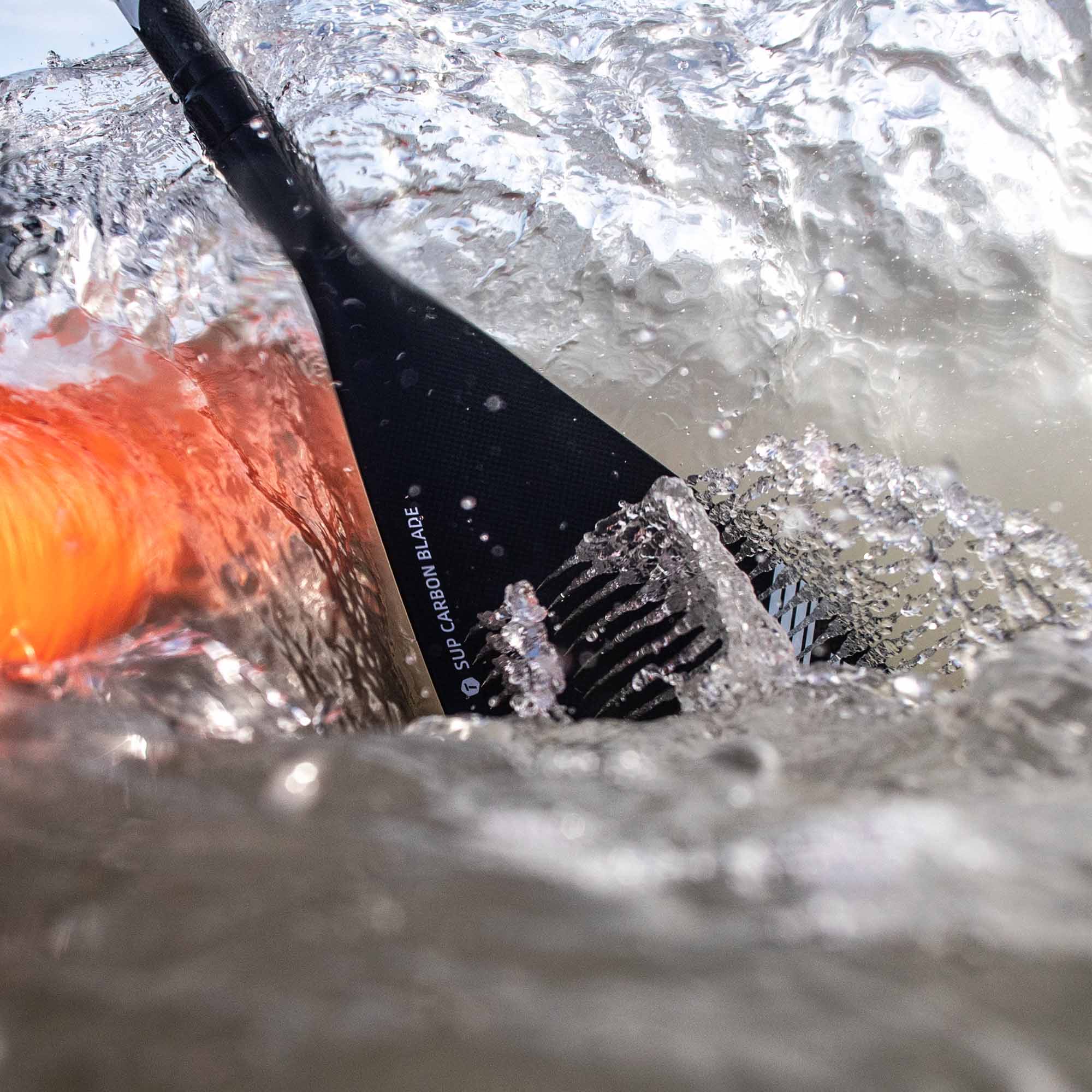
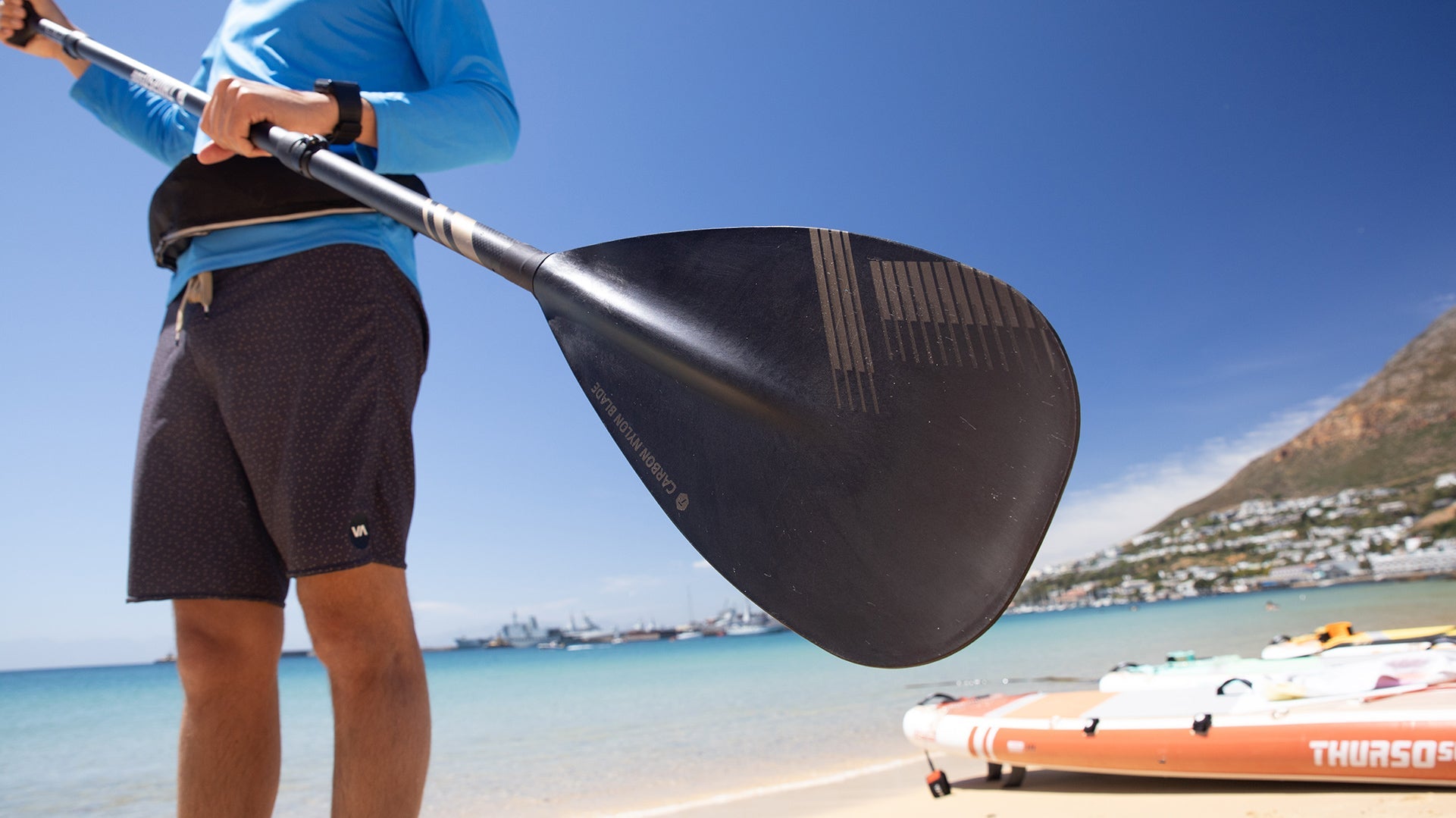
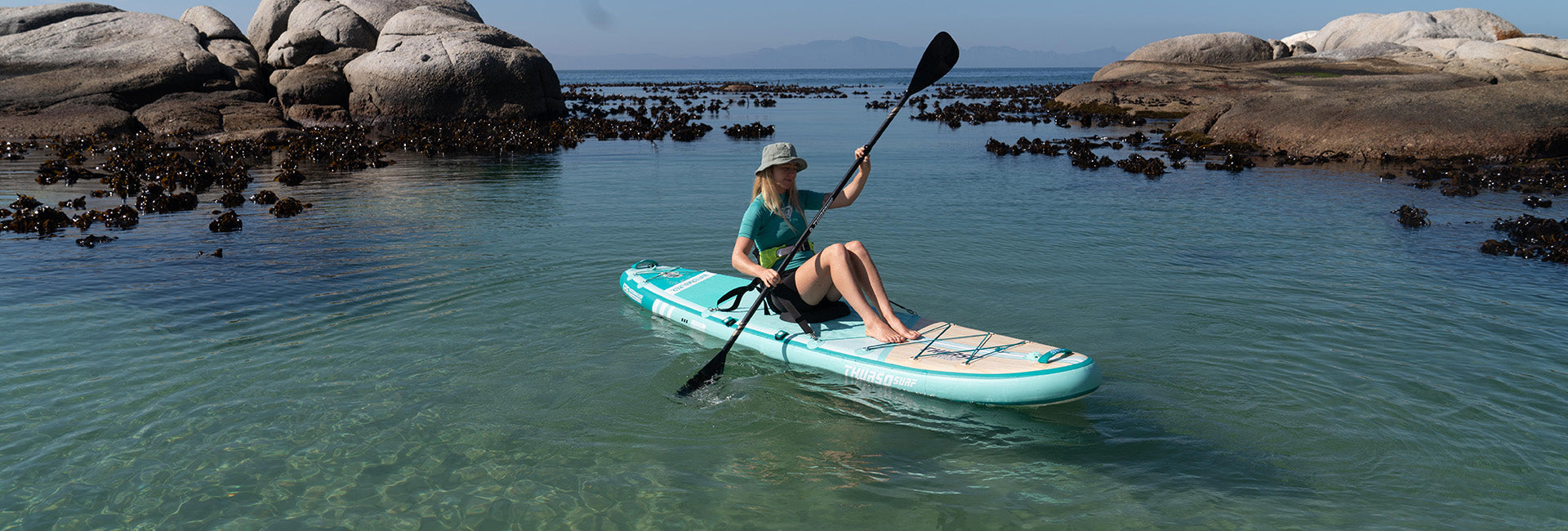

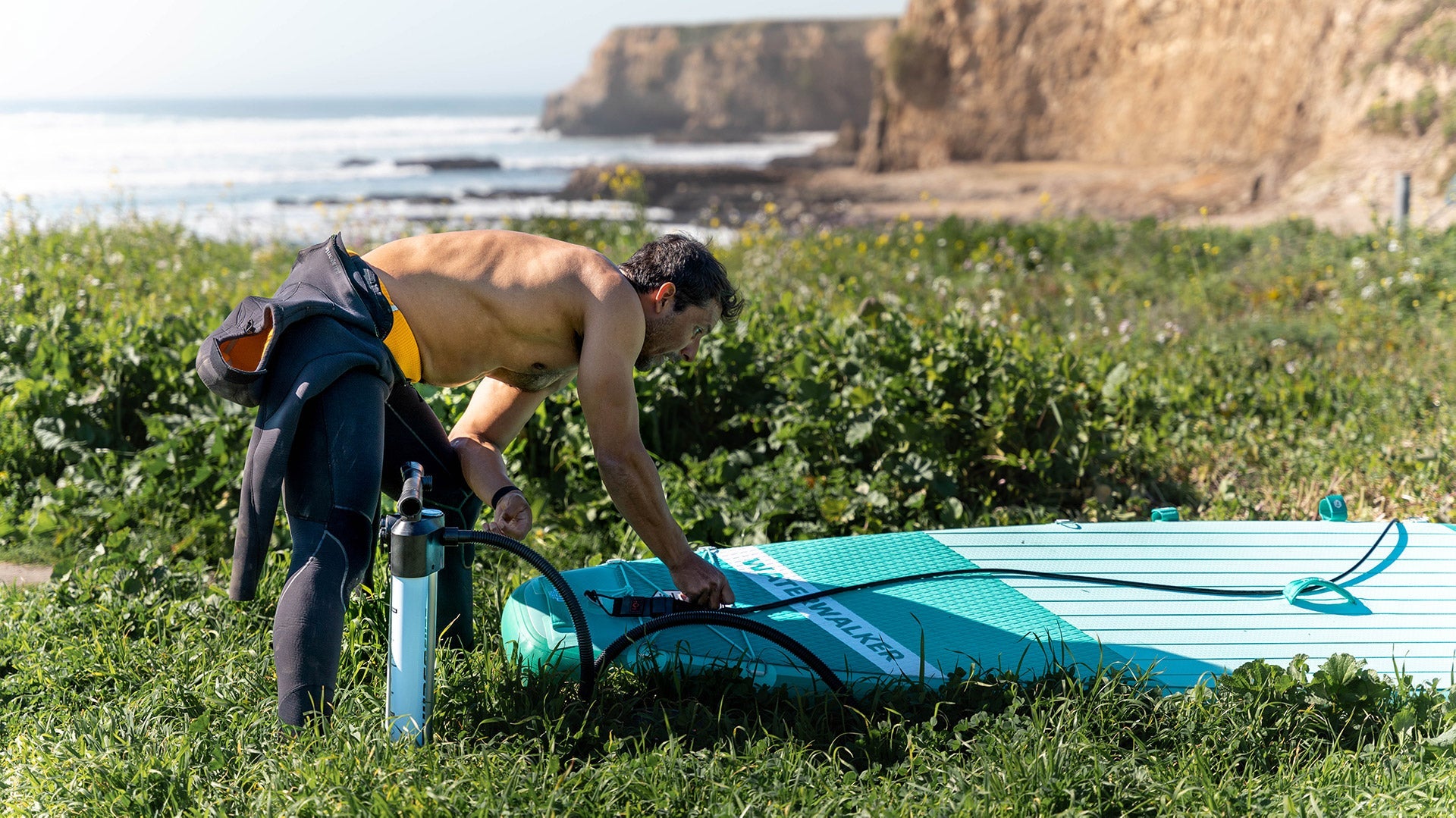
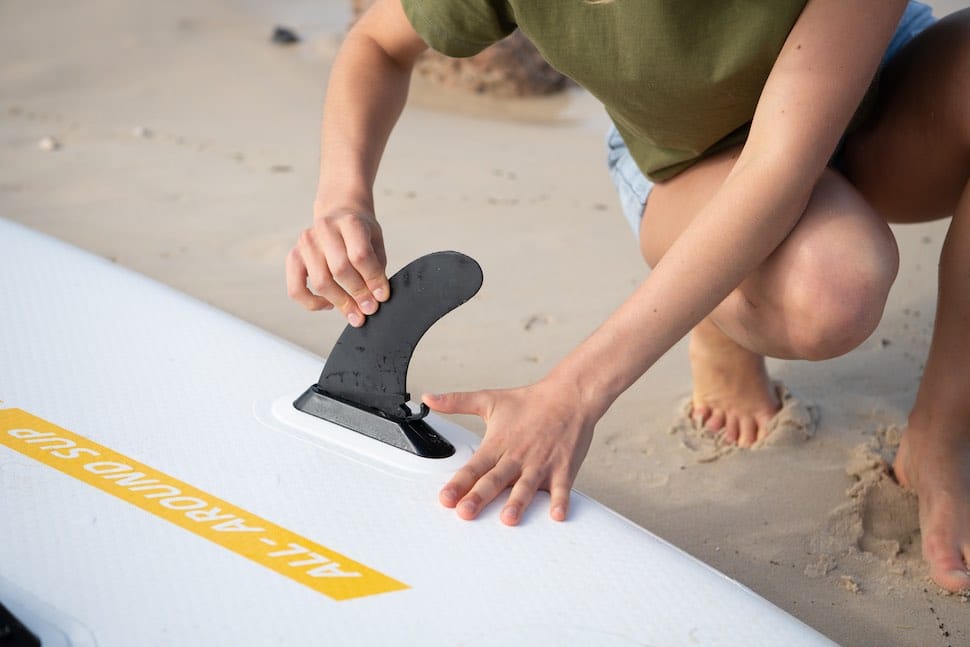



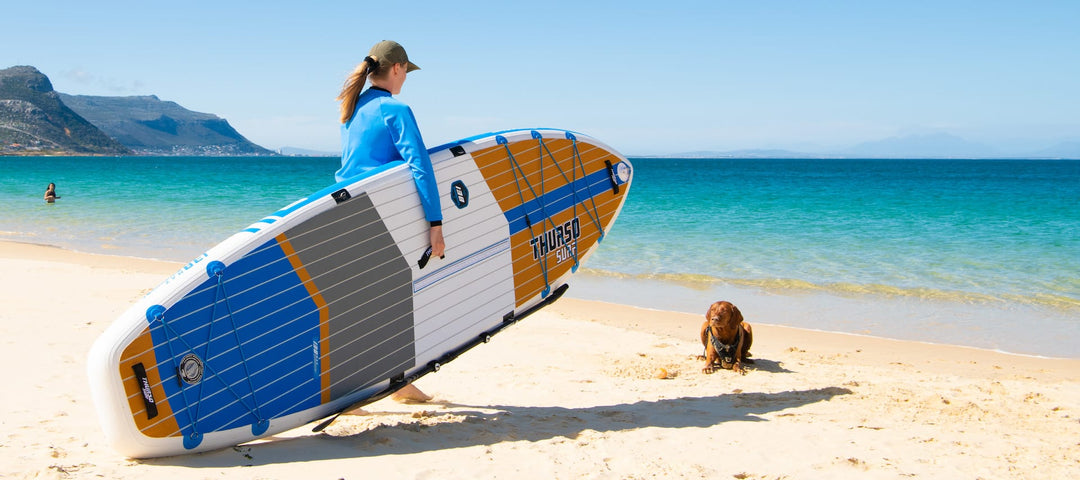
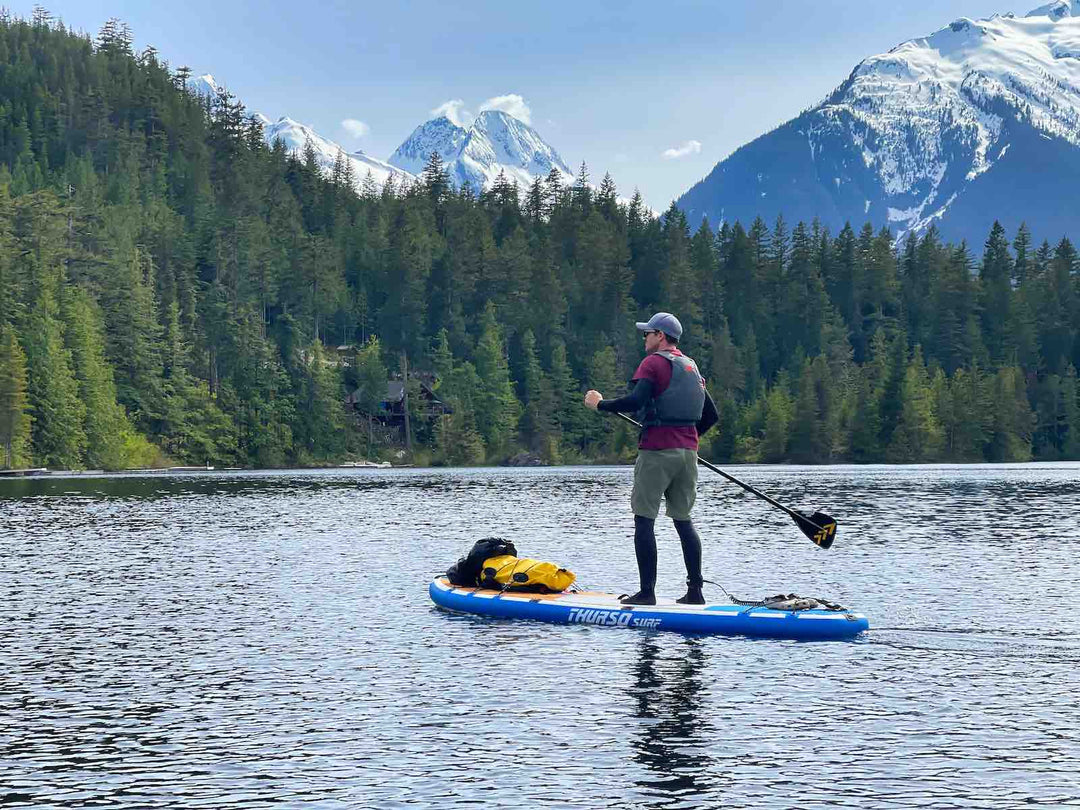

Hey Scott,
Fins are important for surf just as they are for SUP. The wheel analogy is not a bad one. Without fins it feels like you’ve lost steering on your board. It can be fun to see how your board performs with different fin configurations just so you understand what they’re doing for you under the water. Of course, surfboard fins aren’t sized for our SUPs, nor do they fit in our fin boxes, but the same principles apply.
I’m glad I found this blog. This is extremely helpful. Although we know how amazingly fun this sport is, safety is just as important to keep in mind. Being fit and ready is indeed the very first thing to consider knowing how demanding this sport is , mentally and emotionally. Also better equip yourself with the proper surfing gear and choose the right board and fins that suits you base on you ability. Surfboards fins are a must! Surf fins are the wheels of the surfboard and provide stability, performance, agility, and drive. Read more about it here :
https://3dfins.co.uk/blogs/media-spotlight/surfboard-fins-and-safety
Hey there Scott,
Thanks for your comments! Yes, falling safely is often overlooked skill for surfers and paddleboarders. And of course, getting the right board and fin setup is key for beginners. Always good to share the knowledge and stoke!
Cheers,
Jordan-na
I like how you included learning how to fall while paddleboarding in the surf. It is an often overlooked part of a surfer’s basic skill set. It goes to show how much experience you’ve had in surfing. Speaking of safety, beginners will benefit greatly by choosing the right type of board and surf fins for surfing. You can read more about surfing fins and safety here:
https://3dfins.eu/blogs/media-spotlight/surfboard-fins-and-safety
Hi Shammy,
So glad you found our tips helpful! Swimming is a fantastic exercise that will get you into surf and SUP shape. Hope you have a wonderful and fun 3rd wedding anniversary!
Cheers,
Jordan-na
Leave a comment